-
France debates its anti-terror approach
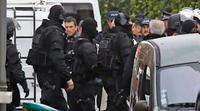
The French are debating their anti-terrorism policies in the wake of the worst terrorist attacks on French soil; the debate centers on whether or not the authorities have the right approach to combating terrorism
-
-
Torturing in interrogations tend to be unexpectedly harsh yet ineffective
Government officials have argued that “enhanced interrogation techniques” are necessary to protect American citizens, but the effectiveness of such techniques has been debated; a recent study argues that when torture is used to elicit information, it is likely to be unexpectedly harsh yet ineffective
-
-
Nuclear summit focuses on terrorist nukes

The Seoul nuclear summit focused on the risk of nuclear terrorism; there are two risks: first, fissile materials, which terrorists may use to construct a dirty bomb, is kept at thousands of medical, research, and industrial facilities around the world – often without sufficient security; second, constructing a Hiroshima-type bomb is not as difficult as we may think
-
-
A nuke blast in D.C. would not destroy city: report
A study finds that a 10-kiloton bomb detonated in Washington, D.C. would destroy many buildings and kill many people, but it would not completely destroy the city; says one expert: “If you are thinking about (a city) being wiped off the face of the earth, that’s not what happens”
-
-
FBI questions its relationship with NYPD, pt. 2
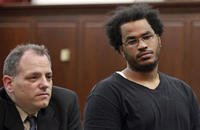
In the first part of this article, we reported that the FBI’s relationship with the NYPD Intelligence Division has become strained, and as a result information exchange has been impaired as the FBI and other jurisdictions have objected to some of the actions NYPD has taken; today, we report on the NYPD’s view
-
-
PositiveID’s M-BAND fits the bill for $3 billion BioWatch program
DHS’s $3.1 billion BioWatch program aims to place biosensors on top of utility poles and buildings in major American cities in order to detect bioterror attacks; PositiveID says its M-BAND solution is well positioned to be picked up by DHS for the program
-
-
Court deadline for U.S. govt. to explain MEK position

Today is the deadline for the U.S. Department of State to explain to the U.S. Court of Appeals for the District of Columbia Circuit why the department would not remove the Iranian anti-government movement MEK from the U.S. terrorist watch list; the MEK engaged in terrorist activities against the current regime in Iran, but renounced to use of terrorism after 9/11; the EU has removed the MEK from its terrorist list a few years ago
-
-
FBI questions its relationship with the NYPD, pt. 1
The split between the the FBI and the NYPD continues to grow, as the NYPD Intelligence Division takes on a far-reaching and aggressive role in intelligence gathering
-
-
U.S. Congressman: Hezbollah greater threat than al Qaeda
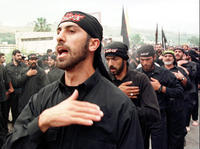
Al Qaeda is perceived as the primary terror threat to the United States, but Congressman Peter King (R-New York), chairman of the House Homeland Security Committee, sounds the alarm that Hezbollah may be the greater threat
-
-
U.S, Israel employ shady organization against Iran
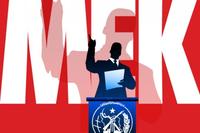
Analysts have concluded that the United States and Israel may be in a strategic alliance with a former left-wing Iranian political group instrumental in the 1979 Islamic Revolution and the overthrow of Shah Rezi Pahlavi; the purpose of the alliance is to destabilize the current regime in Iran
-
-
Killer silk kills anthrax, other microbes dead
A simple, inexpensive dip-and-dry treatment can convert ordinary silk into a fabric that kills disease-causing bacteria — even the armor-coated spores of microbes like anthrax — in minutes
-
-
U.K. worried about dirty bombs

U.K. deputy prime minister Nick Clegg warned that materials to make a dirty bomb are readily available – so much so, that police forces cannot hope to contain such a threat; “That is a stateless threat, impossible for any national police force, no matter how advanced, to contain,” he said
-
-
Armed pilot program budget to be slashed in half
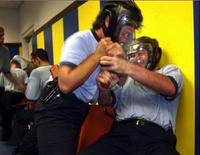
The Obama administration’s budget proposes cutting more than half the funding for a program that trains airline pilots to wield guns in the event of a terrorist takeover; the program is voluntary and consists of an intensive eight-day training course and a recurring training every six months; thousands of U.S. airline pilots have been trained to carry weapons as a final line of defense against terrorism
-
-
Making bus transportation more secure: Learning from Israel’s experience
A new report on ground transportation security draws on the experience of Israel with Palestinian terrorists’ attacks on buses; the report helps increase understanding of what can happen and of what can deter, prevent, and mitigate terrorist attacks against bus transit
-
-
FBI increasingly concerned with “sovereign citizen” movement

Over the past decade, the FBI has grown increasingly concerned with the “sovereign citizen” movement; since 2000, sovereign citizens have killed six police officers and violent battles with law enforcement agents are on the rise; the U.S. National Counterterrorism Center classified the movement as a major threat alongside Islamic extremism
-
More headlines
The long view
“The Federal Government Is Gone”: Under Trump, the Fight Against Extremist Violence Is Left Up to the States
As President Donald Trump guts the main federal office dedicated to preventing terrorism, states say they’re left to take the lead in spotlighting threats. Some state efforts are robust, others are fledgling, and yet other states are still formalizing strategies for addressing extremism. With the federal government largely retreating from focusing on extremist dangers, prevention advocates say the threat of violent extremism is likely to increase.
Luigi Mangione and the Making of a ‘Terrorist’
Discretion is crucial to the American tradition of criminal law, Jacob Ware and Ania Zolyniak write, noting that “lawmakers enact broader statutes to empower prosecutors to pursue justice while entrusting that they will stay within the confines of their authority and screen out the inevitable “absurd” cases that may arise.” Discretion is also vital to maintaining the legitimacy of the legal system. In the prosecution’s case against Luigi Mangione, they charge, “That discretion was abused.”
